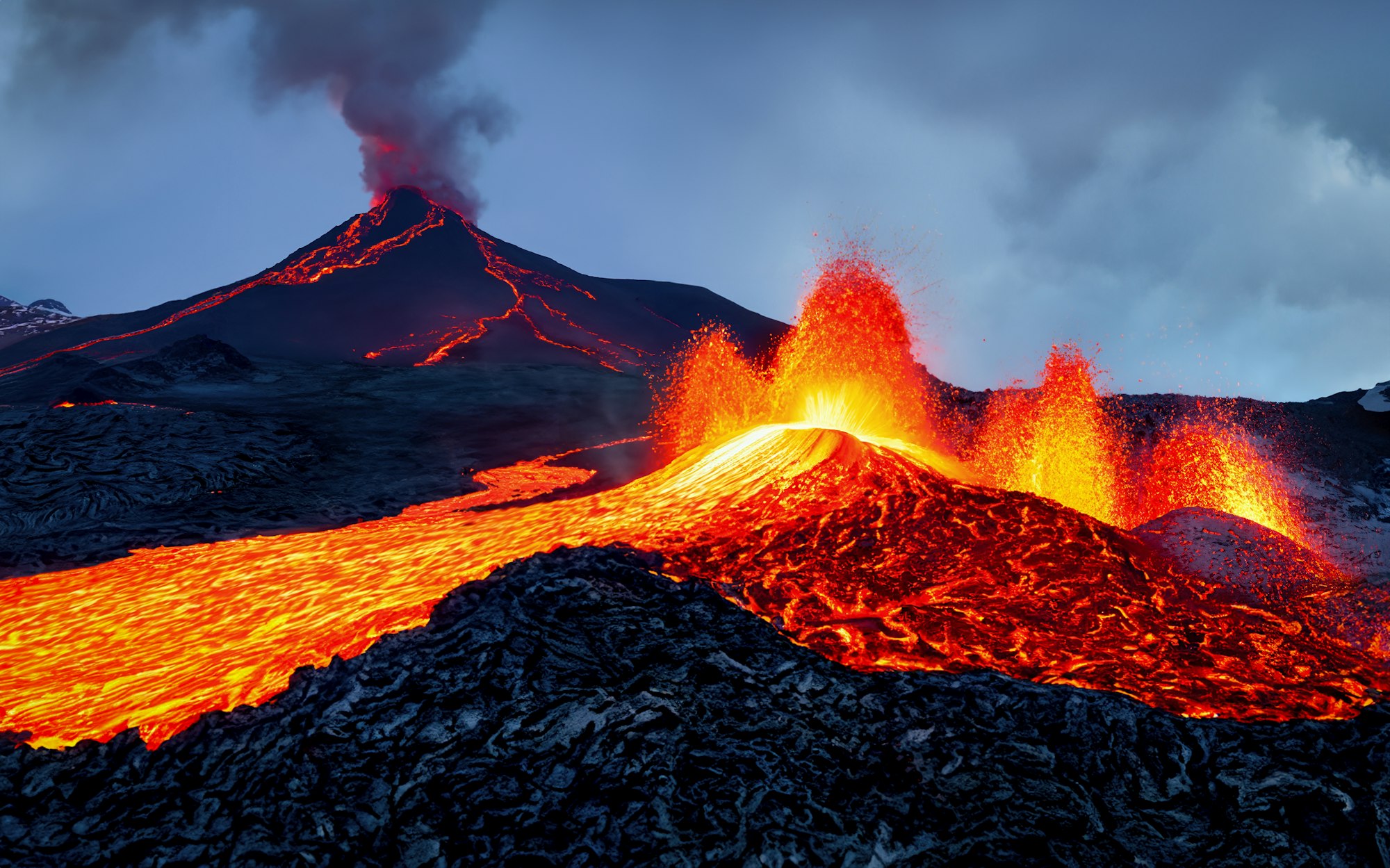What’s Happening with the Volcano Right Now
In Iceland’s Reykjanes Peninsula, there’s been another volcanic eruption, the biggest one since December. The lava from this eruption is now moving towards Grindavik, a nearby town. People living in Grindavik and visitors to the famous Blue Lagoon spa have been moved to safer places. Despite the situation, flights in and out of Iceland are still happening as usual.

Details on the Eruption
This latest volcanic activity kicked off on a Saturday night between two areas called Hagafell and Stora-Scogfell, right where an eruption had happened on December 8. Videos shared by people there show smoke and lava coming out of the ground, making it clear how powerful nature can be.
How the Eruption Is Affecting the Area
The main worry is that the flowing lava might hit Grindavik or mess with important stuff like roads and communication lines. Two main lava streams have been spotted, and one is heading towards a barrier meant to protect the town. This has led to actions being taken to keep people safe and protect property.
Situation in Grindavik and the Blue Lagoon
Grindavik might get isolated if the lava covers important roads. The Blue Lagoon, a big draw for tourists, has been shut down for now. When the eruption started, there were around 500-600 people there, but they’ve all been evacuated.
Risks to Infrastructure
The eruption’s got everyone worried about potential damage to key infrastructure, like roads and the internet. The lava’s already reached one major road and could threaten the operation of a geothermal power plant and affect the Blue Lagoon. There’s also concern about lava cutting off fiber optic cables, which would mess with communications in the area.
Looking Ahead: What This Eruption Means
Iceland is one of the most volcano-packed places on Earth, thanks to its location. The recent eruptions on the Reykjanes Peninsula might be the start of a new period of volcanic activity, something that hasn’t happened in 800 years. This could mean more eruptions over the next few decades or even centuries, so keeping an eye on things is key.
Why This Volcano Stuff Matters Globally
Iceland sits on 33 active volcanoes, and studying them helps scientists learn about how our planet works, especially when it comes to tectonic plates and volcanic activity. Iceland’s spot on the Mid-Atlantic Ridge gives scientists a unique chance to study these natural processes up close.
This update covers the ongoing volcanic eruption near Grindavik, Iceland, as lava poses a threat to the town and its famous spa, the Blue Lagoon. It breaks down what’s happening, the impact on the area, and why this volcanic activity is significant for scientists around the world.

Frequently Asked Questions (FAQs) about the Iceland Volcano Eruption
1. Has the eruption forced everyone in Grindavik to leave?
Yes, people in Grindavik and visitors to the Blue Lagoon have been moved to safer locations because of the lava threat. Authorities are taking precautions to protect everyone’s safety.
2. Are flights in and out of Iceland canceled because of the volcano?
No, flights haven’t been canceled. Iceland’s airspace, including Keflavik International Airport, is still open, and flights are operating normally despite the eruption.
3. How close is the lava to Grindavik?
One of the lava streams is approaching a barrier that’s meant to protect Grindavik. The situation is being closely monitored to ensure the safety of the town and its residents.
4. What are the main concerns with this eruption?
The primary worries include the lava potentially isolating Grindavik by covering key roads, damaging important infrastructure like the geothermal power plant, and disrupting communication by affecting fiber optic cables.
5. Could this eruption start a new period of volcanic activity in Iceland?
Experts think that the recent eruptions could mark the beginning of a new phase of volcanic activity on the Reykjanes Peninsula, similar to an active period 800 years ago. This means we might see more eruptions in the coming decades.
Sources BBC


